SEO-friendly blog posts in WordPress are essential for a flourishing blog. It is not just about writing methods under WordPress but making sure those methods acquire the necessary attention. All the content can be heroically written but never will touch the skies of search rankings unless attention is paid to SEO.
But, you could rest assured! This guide has a wonderful walkthrough; step-by-step with examples, on doing blog posts that are engaging for reading and filling the blank spots for search engines. Get ready for putting your content meaningfully on page one!
What does the term “SEO-Friendly” really imply?

SEO-friendly blogs are not meant for the readers only but also for search engines like Google. This means:
➣Keywords appropriately placed
➣Well-formatted content (headings, paragraphs, bullet points)
➣Optimized images
➣Improved loading speed
➣Encouraging reader engagement
➣Shareability of posts
In a nutshell: write for humans but format for bots.
Why SEO Matters for WordPress Blogs
➣More Traffic:75 percent users do not scroll beyond the first page of Google.
➣Brand Authority: Being on top increases trustworthiness and credibility.
➣Better User Experience: Improve readability and speed at the site, which users enjoy.
Without SEO, you have a huge amount of potential traffic-and the revenues that will follow it-left on the table!
 Step 1: Start with keyword research
Step 1: Start with keyword research
SEO begins even before writing the first word!
Here is how you find suitable keywords:
➣Using tools like Ahrefs, SEMrush, Ubersuggest or the Google Keyword Planner.
➣Search for long-tail keywords (at least 3 words); they are easier to rank for. Instead of just a single keyword like “SEO“, try using a long keyword like “how to write SEO-friendly blog posts in WordPress“.
➣Analyze both keyword difficulty (KD) and search volume features.
Pro tip:
Look for high search volume keywords with low competition!
For example: “WordPress SEO“ is too competitive; try “WordPress SEO tips for beginners.”
Step 2: Click-Worthy Blog Title
Blog title acts as the first thing that users (and Google) see, and, therefore, it has to be attention-grabbing while also including your keyword.
Tips for coming up with killer SEO titles:
➣The main keyword should get priority and fit toward the front.
➣Make sure your titles do not exceed 60 characters in width; otherwise, they may get cut off in search results.
➣Use power words like “Guide,” “Tips,” “Checklist,” “Secrets,” etc.
Example Titles:
➣“SEO-Friendly Blog Posts in WordPress: How to Write Them (Ultimate Guide)”
➣“10 Secrets to Mastering SEO Blog Writing in WordPress”
Step 3: Have a Properly Structured URL (or Permalink).
WordPress allows you to customize your URL pretty much. Make it short, descriptive, and keyword-laden.
Bad URL:
www.yoursite.com/blog-post-123
Good URL:
www.yoursite.com/seo-friendly-blog-posts-wordpress
In WordPress:
➣Navigate to Settings → Permalinks while browsing, and select Post Name for clean URLs.
 Step 4: Write an Irresistible Meta Description
Step 4: Write an Irresistible Meta Description
The meta description that appears as a short snippet under your title in Google search results should also be Made to count.
➣Use your primary keyword.
➣Be sure to keep it under 150, preferably between 150-160, characters.
➣Let it sound like a call to action.
For example, this is “Learn how to write SEO-friendly blog posts in WordPress with this step-by-step guide. Boost your traffic and improve your rankings today!”
In WordPress, meta descriptions can be added easily with plugins such as Yoast SEO or Rank Math.
Step 5 – Use Proper Headings (H1, H2, H3, …)
Headings are decorations. They improve the efficiency of the search engines for understanding the content of the page.
Basic Rule :
➣H1→ Use it ONLY ONCE in a page (WordPress automatically makes your post title H1).
➣H2→ Use it for main sections.
➣H3→ Use it in sub-points under H2s.
➣H4-H6→ For more depths (rarely).
Example:
H1: How to write SEO-friendly Blog Posts
H2: Why SEO Matters H3: Boost Traffic
H3: Build Authority
Use keywords naturally in your headings but don’t stuff.
Step 6: Write Engaging, Valuable Content
Put your wordsmithing to good use!
The following tips may help in creating an SEO-friendly article:
➣Answer intent: Why did the user even search that keyword? Give them what they want.
➣Be comprehensive: Cover everything under the sun. (Google loves “complete” articles.)
➣Keep paragraphs short: maximum length of 2-4 lines; anything longer is a strain on the eyes.
➣Use bulleted or numbered lists wherever you can to allow easier readability.
➣Make an effort to link internally to your own relevant posts and externally to high-authority websites.
Ideal blog post length?
Long formal content between 1500 and 2500 words tends to work out for SEO!
 Step 7: Optimize Images for SEO
Step 7: Optimize Images for SEO
Images make your content look good, but they also need some love when it come to SEO.
How to optimize images:
➣Make descriptive file names (seo-friendly-blog.jpg instead of img001.jpg).
➣Always fill out the ALT Text field with relevant keywords (helps Google and visually impaired users).
➣Use a tool like TinyPNG or Smush to shrink images for faster load speed and you have yourself an onsite optimization.
Bonus Tip:
Add Infographics – they are adhesives that stick a web page to the back of many other sites and social shares.
Step 8: Enhance Your Loading Speed
A slow blog is bad for WordPress SEO!
Ways to speed up:
➣Use lightweight themes from WordPress (for example, GeneratePress, Astra).
➣Install a caching plugin such as WP Rocket or W3 Total Cache.
➣Host images on a CDN (Content Delivery Network) such as Cloudflare.
➣Select a fast, reliable web host (SiteGround, Cloudways, etc.).
Fun Fact:
Google says that with the page load time increasing from 1s to 3s, the chances of bouncing increase by a staggering 32%!
Step 9: Add Internal Links and External Links
Internal Links: Link to your own posts/pages.
External Links: Link to high-quality, authoritative websites.
Why this is important:
➣Keeps users on your site longer (lowers bounce rate)
➣Helps Google understand how your site is structured
➣Gives credence to your site and builds trust
Example:
While writing about keyword research, you could link to a blog post like this:
“Check out our complete guide to keyword research here.”
 Step 10: Utilizing an SEO Plugin
Step 10: Utilizing an SEO Plugin
SEO has been made tenfold simpler with the help of WordPress plugins.
The best SEO plugins are:
➣Yoast SEO (the most popular)
➣Rank Math (lightweight, powerful)
➣All in One SEO Pack
Some main features to use:
➣Focus Keyword Analysis
➣Check Readability
➣Editing Meta Title and Description
➣XML Sitemap Generation
Choose one plugin wisely to use without subjecting your site to multiple SEO plugins!
Step 11: Mobile Optimization is IMPORTANT
Over 60% of searches are done via mobile devices!
Make sure your blog is:
➣Responsive: Looks good on all devices
➣Fast Loading: Optimize your images and code
➣Clickable: Buttons and links should be easy to tap
Pick mobile-friendly themes within WordPress or leverage plugins like AMP for WP to speed up mobile pages.
Step 12: Promote Sharing Among Users
Even though search engines do not take social signals fully into account when measuring the authority of a website, they still have an indirect way to help it achieve authority (More Visibility = More Backlinks = Better Ranking).
Social sharing tips:
➣Add sharing buttons (Shared Counts or Social Snap plugin).
➣Make titles and graphics catchy and shareable.
➣Add “Click to Tweet” boxes inside blog content.
Example:
“Wanna boost your WordPress SEO? Click to Tweet and share these tips!”
 Final Checklist: Brief SEO Evaluation Before You Publish
Final Checklist: Brief SEO Evaluation Before You Publish
List of things to check before you press the publish button:
➣Included the primary keyword in title, URL, first paragraph, and meta description
➣Used proper H1, H2, H3 tags
➣Added internal and external links
➣Optimized All Images
➣Checked for Mobile-freindliness
➣Installed and used an SEO plugin
➣Wrote 1500+ words (long form)
Conclusions
Creating SEO-friendly posts in WordPress is not something new, but it does require a sense of strategy, creativity, and consistency.
Follow these steps and over time, you will see improvements in your blog traffic, rankings, and overall authority. Remember that SEO is a marathon and not a sprint!
Now it’s your chance-Go PRO and optimize that next blog post!
💬 What is the most aspiring thing about writing SEO-friendly blog posts? You can share this dream over in the comments below!


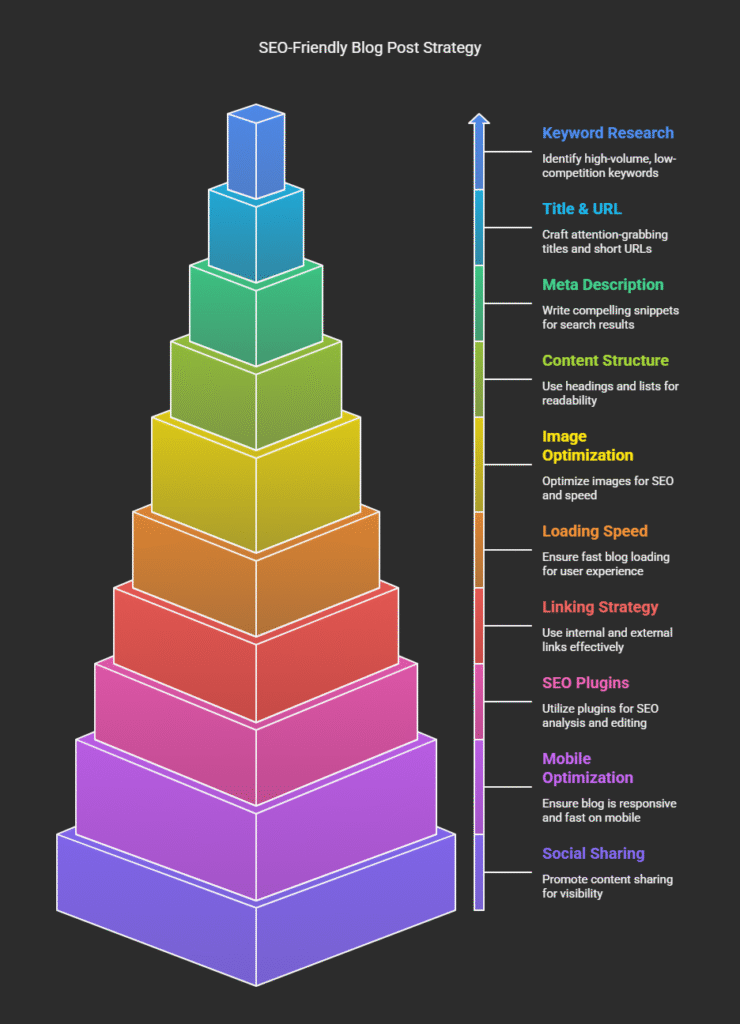
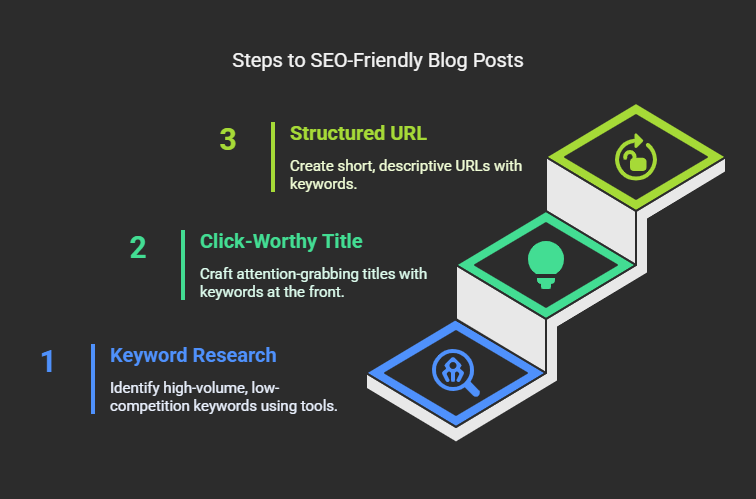 Step 1: Start with keyword research
Step 1: Start with keyword research Step 4: Write an Irresistible Meta Description
Step 4: Write an Irresistible Meta Description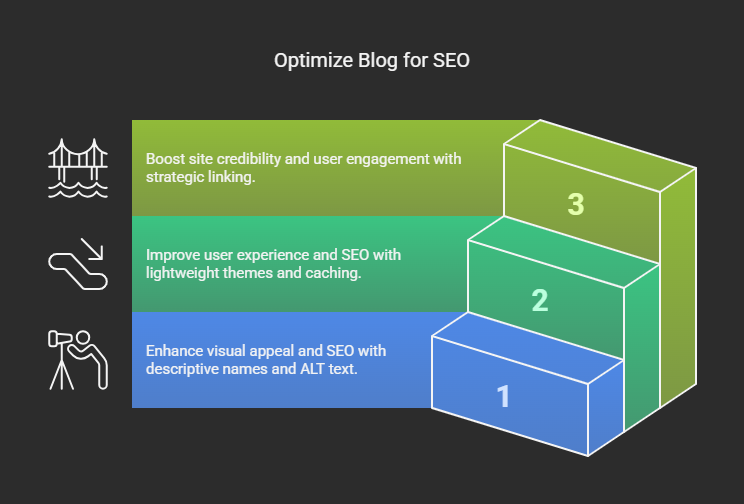 Step 7: Optimize Images for SEO
Step 7: Optimize Images for SEO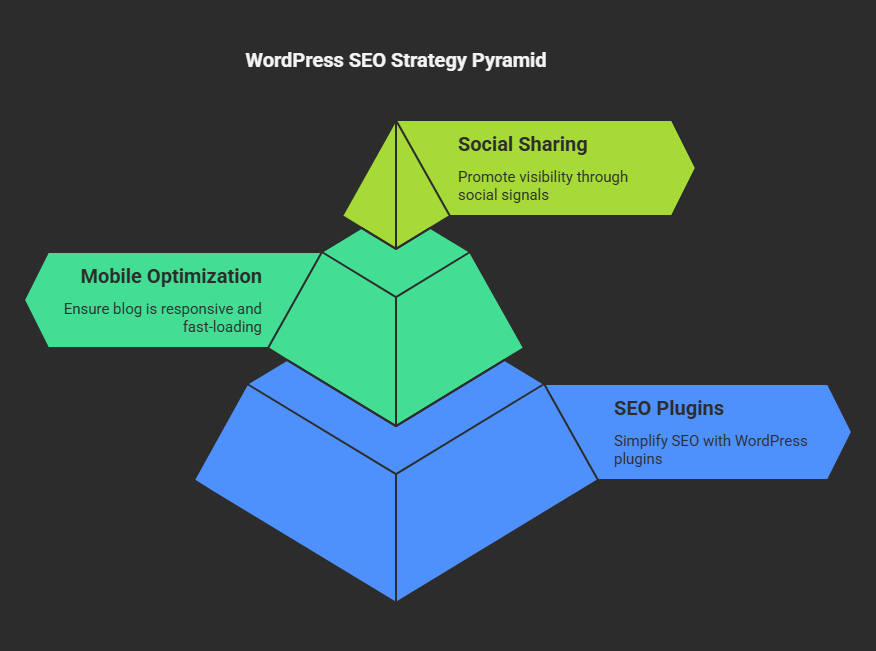 Step 10: Utilizing an SEO Plugin
Step 10: Utilizing an SEO Plugin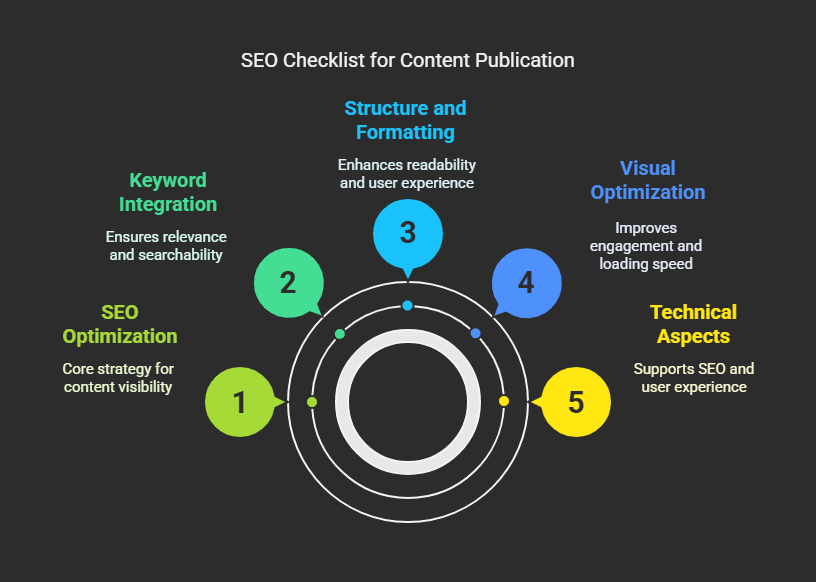 Final Checklist: Brief SEO Evaluation Before You Publish
Final Checklist: Brief SEO Evaluation Before You Publish